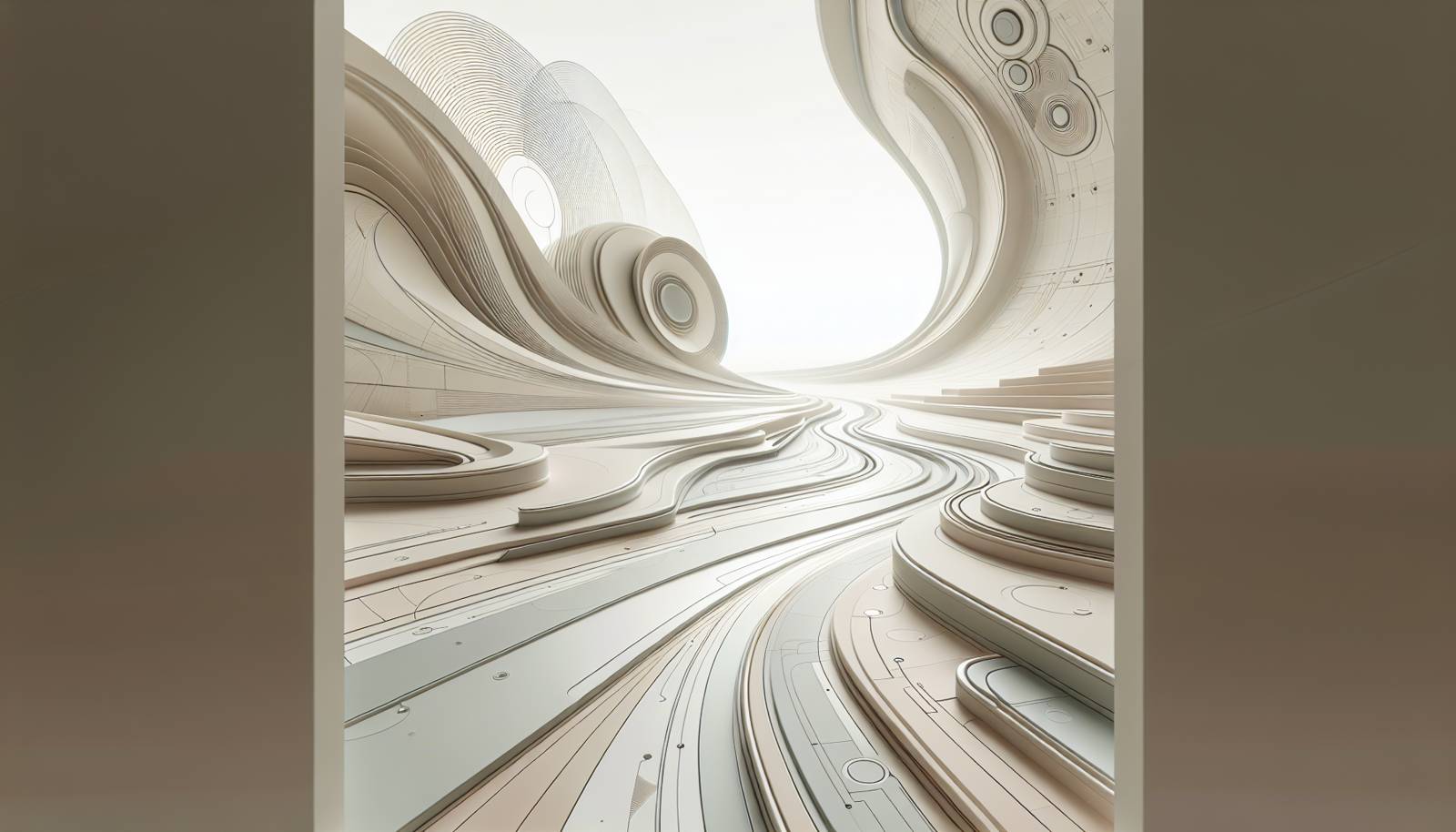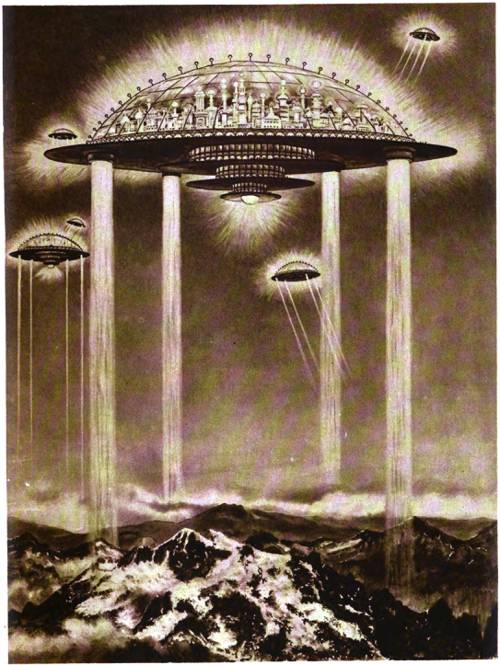
FAQ About Influence of Science Fiction Art on Architecture

What is the connection between science fiction art and architecture?
Science fiction art offers a visual representation of imagined future worlds, presenting innovative forms and structures that challenge conventional design. These artistic depictions can inspire architects to explore new materials, dynamic shapes, and innovative spatial concepts. The visionary ideas present in sci-fi often push the boundaries of what is technologically possible, paving the way for groundbreaking architectural advancements.

How has science fiction art influenced sustainable architectural practices?
Sci-fi often envisions futuristic societies that have adapted to environmental challenges, presenting architectural solutions that are innovative and sustainable. Examples include buildings that incorporate renewable energy technologies, vertical gardens, and organic forms that blend harmoniously with nature. By showcasing these concepts, sci-fi art inspires architects to prioritize sustainability, leading to more eco-friendly and resource-efficient designs in real-world architecture.

Can you give examples of real buildings influenced by science fiction art?
Numerous buildings around the world demonstrate the influence of science fiction art. For instance, the Ryugyong Hotel in North Korea resembles futuristic towers often depicted in dystopian narratives, while the Eden Project in the UK is reminiscent of geodesic domes found in speculative art. Zaha Hadid's designs, such as the Dongdaemun Design Plaza in Seoul, showcase flowing, organic forms that appear otherworldly and futuristic, clearly drawing inspiration from sci-fi concepts.

What role do futuristic materials play in sci-fi influenced architecture?
Futuristic materials are a critical component of sci-fi influenced architecture. In science fiction, materials like transparent aluminum, self-healing concrete, and smart glass aid in building structures that are adaptable and resilient. These imaginary materials inspire real-world innovations, leading architects and engineers to develop new materials that are sustainable, efficient, and strong, such as aerogels and carbon reinforced composites, enabling the creation of groundbreaking architectural designs.

How does sci-fi architecture differ from traditional architectural designs?
Science fiction-influenced architecture often diverges from traditional designs through its emphasis on innovative forms, dynamic shapes, and integration with technology. Unlike conventional architecture, which may focus on historic styles and practicality, sci-fi architecture is more experimental. It challenges structural norms, incorporates advanced technology, and seeks to redefine human interaction with spaces, offering visions of the future that are unbounded by current limitations.

What architectural styles are most influenced by sci-fi art?
Architectural styles such as Futurism, Metabolism, and Blobitecture have been significantly influenced by sci-fi art. Futurism embraces dynamic movement and machine-like aesthetics, Metabolism focuses on organic forms and modular systems, and Blobitecture utilizes amorphous, flowing shapes. Each of these styles reflects the visionary nature of sci-fi art, which often imagines groundbreaking, unconventional structures that symbolize future living.

How do architects incorporate elements from sci-fi art into their work?
Architects incorporate elements from sci-fi art into their work by embracing imagination, innovation, and technological advancement. They may draw on specific aesthetic cues such as sleek lines, asymmetrical forms, and bold structures. Additionally, architects may experiment with cutting-edge materials and technology, aiming to replicate the futuristic atmospheres depicted in sci-fi art through creative and functional designs.

What impact does sci-fi architecture have on urban development?
Sci-fi architecture can significantly influence urban development by inspiring cities to adopt forward-thinking solutions that address urban challenges. The futuristic designs and innovative technologies seen in sci-fi can lead to the development of smart cities, where buildings integrate renewable energy, efficient waste management, and high-tech urban mobility solutions. Such inspiration encourages planners and architects to create urban environments that are sustainable, efficient, and adaptable to future needs.

Are there any specific sci-fi movies known for influencing architecture?
Several sci-fi movies have notably influenced architecture, including 'Blade Runner,' which presents a densely populated, neon-lit urban environment that has inspired many cyberpunk-style designs. '2001: A Space Odyssey' showcases minimalist, modern interiors with innovative use of space and technology. 'Star Wars' features diverse architectural styles ranging from sleek, futuristic lines to organic, nature-integrated structures, all of which have sparked architectural creativity and innovation.

Has sci-fi literature also played a role in architectural innovation?
Yes, sci-fi literature has been pivotal in architectural innovation. Books such as William Gibson's 'Neuromancer' and Philip K. Dick's works have inspired cyberpunk architecture, characterized by high-tech, compact, and layered cityscapes. Authors' detailed world-building and descriptions of futuristic environments encourage architects to rethink spatial organization, material use, and human–environment interactions, often leading to creative and pioneering architectural solutions.

How can sci-fi art influence the design of public spaces?
Sci-fi art influences the design of public spaces by presenting visionary concepts of communal interactions within advanced societies. These artistic ideas can inspire the creation of multifunctional, adaptable environments that encourage social engagement, blending natural elements with technology. This leads to innovative public spaces that are both aesthetically appealing and functionally diverse, fostering inclusive and vibrant community hubs.

What are some challenges architects face when designing sci-fi inspired buildings?
Designing sci-fi inspired buildings presents several challenges, including technological constraints, cost considerations, and regulatory limitations. The innovative materials and structures envisioned in sci-fi art may not always align with current building technologies or construction standards, requiring architects to find creative solutions within existing technical capabilities. Additionally, the often high costs associated with cutting-edge designs can be prohibitive, necessitating careful budgeting and resource management.

How does science fiction art inspire technological advancements in architecture?
Sci-fi art inspires technological advancements in architecture by presenting idealized visions of the future where technology is seamlessly integrated into the urban fabric. These artworks challenge architects and engineers to develop new technologies and construction methods that make bold, futuristic designs possible. This inspiration drives innovation in areas like automated building systems, smart home technology, and materials science, advancing the field of architecture.

Do architects collaborate with sci-fi artists? How?
Yes, architects sometimes collaborate with sci-fi artists to translate imaginative visions into architectural projects. Such collaborations can involve workshops, joint ventures, or consultancy roles where artists provide creative input, envisioning futuristic aesthetics and narratives. These collaborations often help architects to articulate their ideas, broadening their perspectives and enabling the creation of innovative and groundbreaking architectural designs.

How do futuristic architectural designs impact human behavior?
Futuristic architectural designs can profoundly impact human behavior by shaping how spaces are experienced and utilized. Such designs often emphasize adaptability, accessibility, and interaction, encouraging more efficient and productive lifestyles. Futuristic environments can stimulate creativity and innovation while promoting a sense of awe and curiosity, ultimately influencing how people live, work, and socialize within these spaces.

What are some common sci-fi themes in architecture?
Common sci-fi themes in architecture include space colonization, self-sustaining habitats, artificial intelligence integration, and megastructures. These themes explore humanity's adaptability to new environments and challenges, often showcasing architectural solutions that prioritize sustainability, resilience, and technological integration. They reflect a desire to imagine how future societies might evolve and what infrastructures would support such advancements.

Can science fiction art's influence improve the functionality of architectural designs?
Yes, the influence of science fiction art can improve the functionality of architectural designs by pushing architects to consider innovative solutions and futuristic technologies. Sci-fi art often incorporates ideas about adaptive structures and advanced problem-solving, encouraging the development of buildings that are more efficient, adaptable, and integrated with their surroundings. This leads to more functional, diverse spaces that meet the complex needs of contemporary society.

Why is science fiction seen as a source of inspiration rather than a blueprint for architecture?
Science fiction is seen as a source of inspiration rather than a blueprint for architecture because it provides creative ideas and visionary perspectives without the constraints of real-world technical limitations. Sci-fi art allows architects to think beyond current possibilities, exploring novel forms and concepts that may not yet be technologically feasible. This creative freedom encourages innovation and helps architects aspire to achieve breakthroughs that redefine contemporary architectural practice.

What is the significance of mobility and transportation in sci-fi architecture?
Mobility and transportation are significant themes in sci-fi architecture as they address the integration of technology and the need for efficient movement within futuristic environments. Sci-fi art often includes concepts like flying vehicles, hyperloop trains, and multi-level transport networks, which promote the idea of seamless interaction between different parts of cities. These concepts inspire real-world designs that seek to improve urban connectivity and encourage sustainable, high-speed transit solutions.

How do cultural interpretations of sci-fi influence architectural diversity?
Cultural interpretations of science fiction influence architectural diversity by reflecting varied societal values, technological developments, and climatic needs. Different cultural contexts draw unique inspirations from sci-fi art, leading to distinctive architectural styles that incorporate both local heritage and futuristic elements. This diversity is evident in how cities around the world experiment with integrating sci-fi aesthetics while maintaining respect for cultural identity and environmental adaptability. Such interpretations foster architectural variety and innovation globally.
